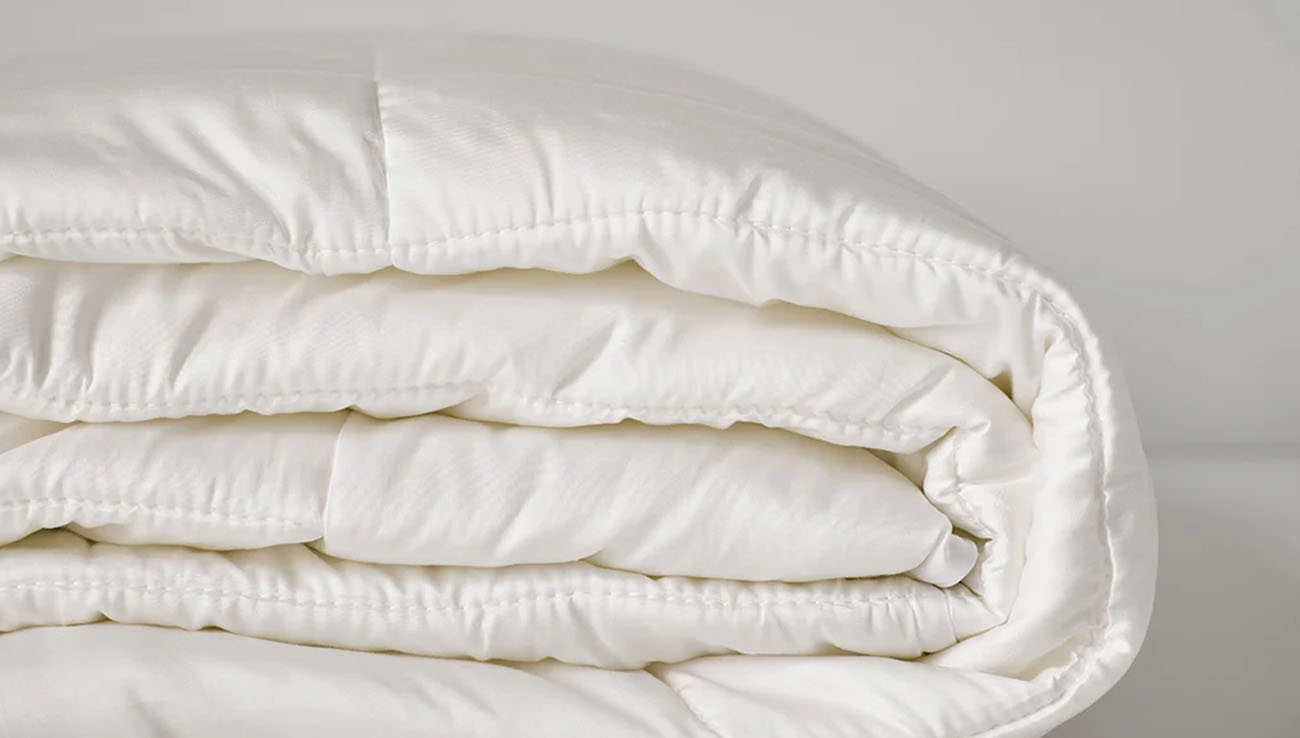5 Tips when buying a TENCEL™ duvet
Did you know that the quality of your sleep strongly depends on the type of duvet you use? A TENCEL™ duvet offers many advantages. It is made of sustainable eucalyptus wood. Due to the use high quality fibers, a lyocell duvet can help you get a good night’s sleep. The fiber makes it an antibacterial and hypoallergenic duvet and therefore very suitable for people with a house dust mite allergy or eczema. In addition, sleeping under a TENCEL ™ duvet is pleasant for hot sleepers because the material is breathable and temperature regulating. It is cooling during hot nights and pleasantly warm during colder periods. That is good news, so bye bye to sweaty hot nights!
If you have already decided to buy a TENCEL™ duvet, there are still a few things you should pay attention to. Here are our 5 tips.
1. Check the material: filling and ticking
Always check the label or product specification and see what material the duvet is made of. Look at both what the filling and the ticking (outside) of the duvet are made of.
Filling: Some duvets have a 100% TENCEL™ filling, while others contain a mix of lyocell with other materials, such as down or synthetic fibers. Consider what is important to you, such as only natural materials or a blend.
Ticking: It is also important (!) to see what the ticking is made of. Especially if you value good temperature regulation or when you have an allergy to house dust mite. Sometimes the ticking is not made of TENCEL™ but, for example, (organic) cotton or polyester. This may prevent you from experiencing all the positive features of a lyocell duvet.
2. Which heat class duvet should I choose?
Like any other duvets, TENCEL™ Lyocell duvets are also available in different thicknesses. It is important to choose a comforter that is suitable for the climate you live in. In addition, it also depends on your personal preference. After all there are hot and cold sleepers. Some like to wear pajamas, others suffer from hot flashes and prefer to sleep under a cooling duvet all year round. By choosing the right duvet with the right heat class, you can sleep comfortably all year round.
A heat class for duvets indicates how warm a duvet is and how suitable it is during the different seasons. The same heat classes apply to TENCEL™ duvets. Please note: it is only an indication and therefore partly depends on your personal preference. There are four different heat classes that indicate the warmth of a duvet: heat class 1 offers the highest level of warmth and heat class 4 the lowest.
a. Heat class 1 (winter duvet). This is a very warm duvet, suitable during cold winters or in a room with a very low temperature. This heat class is also suitable if you feel cold quickly at night.
Usually there are 4 season duvets that consist of two parts: a spring/autumn duvet and a summer duvet. These two duvets combined are a 4 season duvet or an All seasons duvet. A TENCEL ™ All seasons duvet usually feels a bit heavier than, for example, a down duvet.
b. Heat class 2. This is a warm duvet, suitable during autumn or in a room with a low temperature.
c. Heat class 3. This is a medium warm duvet, suitable during spring/autumn or in a room with an average to low temperature. These duvets keep you at a comfortable temperature during 5-8 months of the year.
d. Heat class 4 (summer duvet). This is a light duvet, which is mainly used during the summer months. This comforter is light and airy. With a TENCEL™ summer duvet you won’t get too hot even during warm summer nights because of the temperature regulating specifics of TENCEL™. An ideal duvet for people who don’t want to be covered by just a sheet.
3. What size duvet fits my bed?
Make sure you choose the right duvet size for your bed. Duvets are generally available in the following sizes (w) x (l):
* 140×220 (Single)
* 200×220 (Double)
* 240×220 (Queen size)
* 260×220 (King size)
Always measure your bed and/or duvet cover before purchasing a duvet. Some like it if the comforter is a little wider than the mattress. Others prefer less fabric on the sides.
4. How do I maintain a TENCEL™ comforter?
Fortunately, a TENCEL™ duvet requires little maintenance. Because it is difficult for bacteria to attach or settle in the smooth fibers, a TENCEL ™ duvet keeps smelling fresh. Airing the duvet every now and then is sufficient. Do you want to wash the duvet once in a while? We recommend washing the TENCEL™ duvet at a maximum of 30 degrees and air dry it. This is better for the material, more sustainable and moreover environmentally friendly. Are you temporarily not using the duvet or a part of it? Store it in a spacious, closed bag to prevent it from becoming dusty.
5. How can I put the duvet into the cover?
Putting the duvet in your duvet cover is not always easy. To make life a little easier some duvet covers have strings or ribbons on the inside that you can use to fasten the duvet. With a small wavy movement you can then shake the duvet into the duvet cover. The strings help to keep the comforter from sliding down during the night. We do not recommend using safety pins because that can be unsafe. In addition, they can damage a comforter or duvet cover.
With all the above tips, we hope to help you choose a TENCEL™ comforter that fully fits your needs and wishes so that you can enjoy it for many years!
Want to stay informed about our sleeping tips and fun promotions? Sign up here for our newsletter for free and instantly receive 10% discount on your first purchase.




